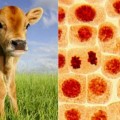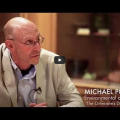Who came first, the wildlife or the suburban human community? It may seem like a simple enough question with the obvious answer: “the wildlife.” However, more and more, one cannot help but wonder who really came first, but more importantly, where to draw the boundary line defining “wildlife overpopulation” in suburban environments. What is “wildlife” in a suburban environment? What is overpopulation?
Allow this author to first warn that this post is merely an opinion, with little to no scientific background on the matter.
Second warning, much of the issue/debate will be shaped by the environment in which the reader(s) reside. For example, if one reader were to live in a rural mountainous areas vs. another reader in a suburban residential area outside of a large metropolitan region, the issue of what *is* wildlife would be similar to comparing apples and oranges… or at least so it would appear to this author…
Third point, this post does not purport to argue whether local governments should be or should not be controlling or managing “wildlife” overpopulation, and if at all, how to humanely control and manage, as that topic in and of itself would be worthy of its own post.
Now on to the debate.
Many local American municipalities are overwhelmed with “wildlife” overpopulation, especially troublesome to such municipalities are high densities of Canadian geese and deer. The questions that often plague animal lovers and environmentalists include whether or not humans have the right to consider the issue as one of invasion and overpopulation when, frankly, the “natural” environment would seem to have secured its foothold long before suburbia encroached on its territory.
Moreover, many will argue that the suburban environment is actually unknowingly designed to lure and attract “wildlife” with the prevalence of tasty, ornamental landscaping. Is this true? Are homeowners the ones who entice the wildlife to visit and regularly consume the suburban landscaping?
One might also wonder if the wildlife who frequent residential environments are becoming less wild, essentially evolving to the new norms of sources for their food and shelter needs? Are regular visitors to the backyard garden still considered wild if they have become accustomed to dining from suburban cornucopias of annuals and perennials practically planted and pruned for their benefits?
Then of course, the question must be asked: is the issue really one of overpopulation? Maybe there would be just as many wild animals, if not more in suburban developments, but that their presence is more obvious due to the lack of habitat forcing them to wander into visible areas of human residences? Or perhaps it’s that much of wildlife overpopulation is due to the lack of natural predators, eradicated by humans as safety threats?
Regardless of why wildlife continues to pester many a homeowner’s revered backyard gardens and frontyard decor, it is interesting that many people regularly engage in speciesism. Perhaps it is something as simple as size: larger animals will leave larger footprints. No one seems to be complaining about the birds that fly up to snag a seed from the benevolently bestowed stash by the kitchen window or the butterflies that enjoy the nectar of newly bloomed spring flowers by the trellis. No complaints of “overpopulation” of these animals. Is it because they are more beneficial to the suburban scenery and less destructive?
It is even more interesting when considering the scenario of people visiting the “great outdoors,” they regularly overlook the small creatures and seek to find the larger ones. NIMBY is not just for pollution or other modern atrocities, people have reached new heights of anthropocentrism. Seeking not only to shape what their homes look like, but their external environments wherever they may be. So long as the animals in the human environment appear to benefit suburbanites in their chosen location, it seems as though the actual population is of little concern to the homeowner on Main Street.
With so many ways to consider the issue of “wildlife overpopulation,” this author would hope that solutions will more frequently address the roots of this alleged problem rather than seeking end of the pipe remedies. The real question then would seem not to be whether the wildlife or the suburban environment came first, but rather, when, if at all, will people realize that the “problems” about which are so often complained are ultimately caused by the complainers themselves.





1 Comment
Chia (324 comments)
May 1, 2008 at 11:50 amThanks for writing about wildlife “overpopulation”. In my opinion, there is no such thing. Wildlife is only “overpopulated” according to human societies because the animals are taking up space that people who like to occupy. Why do humans need so much space anyway? Why build big houses and parking lot sprawls? Smart planning and sustainable development is key to ensuring a respect for the common space that human animals share with non-human animals.